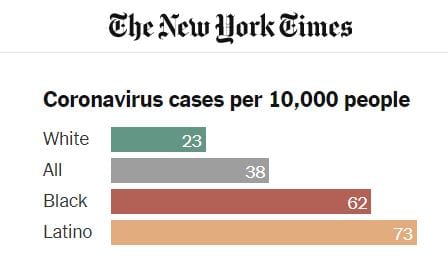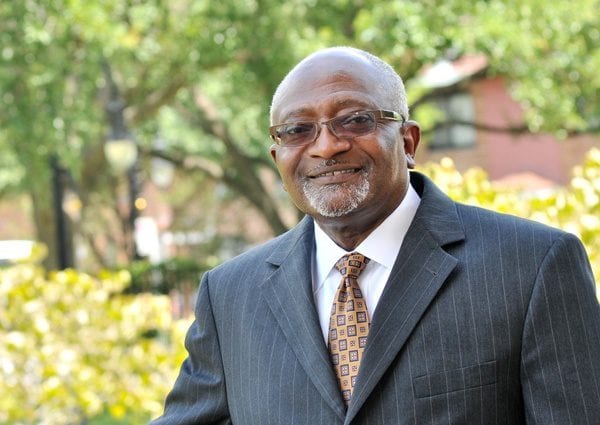At our last few meetings with our CREATE Ambassadors, we’ve been discussing environmental justice. Although it was previously an unfamiliar topic for most of the students, they were really interested in learning more and thinking about the intersections of environmental and social issues relevant to community resilience. We want to share some of the information we researched and discussed with the ambassadors with a broader audience who might be interested in an introduction to environmental justice.
Environmental justice “embraces the principle that all people and communities have a right to equal protection and equal enforcement of environmental laws and regulations” (Dr. Robert Bullard). It contrasts with current widespread environmental injustice or environmental racism where race and class are closely correlated with environmental health and vulnerability to natural hazards. High-income communities are exposed to less air pollution than low-income communities, for example. Income can’t fully explain the gaps though – a 2008 study found that African American households with incomes between $50,000-$60,000 live in neighborhoods that are on average more polluted than the neighborhoods of white households with incomes less than $10,000. It’s not just pollution either – flooding, extreme heat, and other environmental hazards also disproportionately affect communities of color.
The negative effects of these environmental risks are magnified by other policies – in healthcare,  disaster response, food, and other areas – that also underinvest in or place disproportionate burden on communities of color and low income communities. COVID-19 is an example of this. Exposure to air pollution creates chronic respiratory issues like asthma, which can make people more susceptible to COVID-19 and increase mortality rates of the virus. Add to that the fact that those same people may have more difficulty accessing the healthcare system, be less likely to be able to work from home or have paid sick leave, or may not be able to afford air conditioning and need to go to a public cooling center during a heat wave, and the harm from COVID and air pollution multiplies in low-income communities or communities of color in a way that it does not in wealthier, whiter places.
disaster response, food, and other areas – that also underinvest in or place disproportionate burden on communities of color and low income communities. COVID-19 is an example of this. Exposure to air pollution creates chronic respiratory issues like asthma, which can make people more susceptible to COVID-19 and increase mortality rates of the virus. Add to that the fact that those same people may have more difficulty accessing the healthcare system, be less likely to be able to work from home or have paid sick leave, or may not be able to afford air conditioning and need to go to a public cooling center during a heat wave, and the harm from COVID and air pollution multiplies in low-income communities or communities of color in a way that it does not in wealthier, whiter places.
The causes of these inequities are numerous and long-standing, and include intentional discrimination in where polluting sites are built, lower levels of enforcement of environmental protection laws in low-income communities, obstacles to exerting political power for low-income communities and communities of color, and discriminatory housing policies that contribute to segregation, among others. So what does this mean for pursuing environmental justice and community resilience?
The First National People of Color Environmental Leadership Summit held in 1991 established a set of principles of environmental justice that have since guided many organizations (often led by people of color) in pursuing policies that reduce the inequality of how environmental benefits and burdens are distributed. These principles include ethical and responsible land use, right to “political, economic, cultural, and environmental self-determination of all peoples,” equal participation in decision making processes and much more. By learning from the example of groups like Communities for a Better Environment and the Climate Justice Alliance, which focus on working with frontline communities to address environmental issues that affect them first and most severely, we can all consider whether actions we might take to build resilience reduce inequalities and injustices or exacerbate them. If information is being sent out, is it accessible in multiple languages or without internet access? If investments are to be made, which communities will be receiving them? If additional taxes or fees are to be implemented, what plans are in place for the additional burden that places on low-income people?
While environmental justice is currently receiving increased attention as a result of the ongoing national discussion about race and inequality, it has long been recognized by frontline communities as critical to a fair, healthy, sustainable society. As we saw through working with our CREATE ambassadors, there is particularly strong interest among young people in addressing not only the social inequity in our world or the environmental harm that has been done to our planet, but tackling both issues together, to build future communities that are all around better, more resilient places to live. Learning about and committing to environmental justice is one step in that direction.
Environmental justice is a rich and far-reaching topic which has been the focus of many individuals and organizations for decades. Please use this article as a jumping off point to seek out more information that you can apply to your own work or community. Some additional resources can be found below:
Climate Justice Committee – Allentown – Make the Road PA
Learn about Environmental Justice – Dr. Robert Bullard
Communities for a Better Environment
Climate Justice Alliance
Environmental Justice: A Primer – Columbia University


